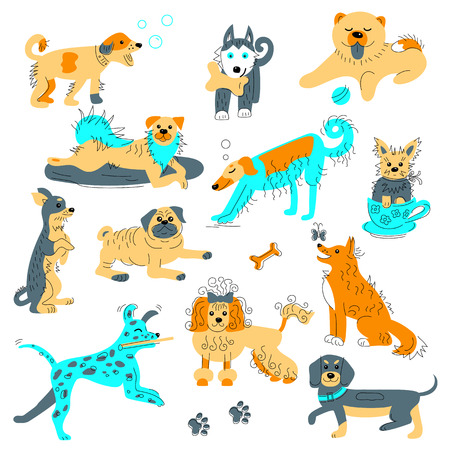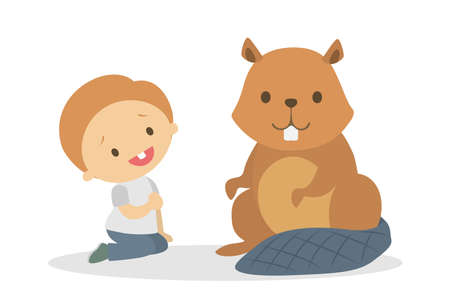1. Understanding the Similarities Between Baby-Proofing and Pet-Proofing
When it comes to creating a safe home environment, both parents and pet owners face many of the same challenges. Whether youre protecting a curious toddler or an adventurous pet, the goal is to prevent accidents by securing dangerous areas and removing hazards.
Common Challenges in Baby-Proofing and Pet-Proofing
Many of the steps taken to baby-proof a home are also useful for pet-proofing. Both babies and pets love to explore, touch, chew, and get into places they shouldnt. Here are some of the most common safety concerns:
| Safety Concern | Baby-Proofing Solution | Pet-Proofing Solution |
|---|---|---|
| Securing Cabinets | Install childproof locks to keep babies from accessing cleaning supplies or small objects. | Use cabinet locks to prevent pets from getting into food storage or toxic chemicals. |
| Blocking Dangerous Areas | Use baby gates to restrict access to stairs or unsafe rooms. | Use pet gates to keep pets away from kitchens, staircases, or hazardous spaces. |
| Removing Choking Hazards | Keep small toys, coins, and other small objects out of reach. | Avoid leaving out small items like hair ties or jewelry that pets might swallow. |
| Cord and Wire Safety | Tie up or cover electrical cords to prevent babies from pulling on them or chewing. | Use cord protectors to stop pets from chewing on wires and causing electrical hazards. |
The Importance of Supervision
No matter how well you baby-proof or pet-proof your home, supervision is always necessary. Babies and pets are naturally curious, and they can quickly find ways around safety measures. Keeping a watchful eye ensures that they stay out of harms way while exploring their surroundings.
The Role of Training and Teaching
A key difference between baby-proofing and pet-proofing is that babies eventually grow up and learn what is safe, while pets rely on training throughout their lives. Teaching a child about household dangers is just as important as training a pet to avoid certain areas or behaviors.
A Shared Responsibility for Safety
Both parents and pet owners share the responsibility of making their homes safe environments. By recognizing these similarities, they can learn from each others experiences and adopt strategies that work best for their unique household needs.
2. Key Differences in Safety Measures for Babies vs. Pets
When it comes to creating a safe home, both baby-proofing and pet-proofing require careful planning. However, the way babies and pets explore their environment is quite different. Understanding these differences helps parents and pet owners apply the right safety measures.
Mobility Differences
Babies and pets move in unique ways, which affects how they interact with their surroundings. While babies start with crawling and gradually learn to walk, pets—especially cats and dogs—are already mobile from a young age.
| Factor | Babies | Pets |
|---|---|---|
| Movement | Crawl, stand, then walk | Run, jump, climb (depending on species) |
| Main Safety Concern | Tipping furniture, stairs, sharp edges | Cords, small objects, toxic plants |
| Common Barriers Used | Baby gates at stairs & doorways | Pens/crates for confinement when needed |
Curiosity Levels and Risk Factors
Both babies and pets are naturally curious, but they explore in different ways. Babies rely on touch and taste, often putting objects in their mouths. Pets use their noses and paws to investigate new things.
Dangers of Small Objects
A baby might try to swallow small toys or household items, while a pet may chew on something harmful like electrical cords or shoes. Keeping floors clear of hazards is essential for both.
Toxic Substances and Plants
Certain household products and plants can be dangerous for both babies and pets. However, pets are more likely to chew on plants or drink from unattended cups, requiring extra caution.
The Way They Interact with Their Environment
The way babies and pets engage with their surroundings influences how you set up safety precautions.
Crawling vs. Jumping & Climbing
A crawling baby will grab onto low furniture or pull on tablecloths, while a cat may leap onto countertops or shelves. This means securing heavy objects is important for both—but in different areas.
Cord Safety Concerns
Babies may tug on dangling cords out of curiosity, while pets (especially cats) might see them as a toy to swat or chew on. Cord management solutions should address risks for both groups.
The Bottom Line: Different Needs Require Unique Solutions
While there are similarities between baby-proofing and pet-proofing, understanding the differences in mobility, curiosity levels, and interaction styles ensures a safer home for all members of the family—whether they have two legs or four!

3. Lessons Parents Can Learn from Pet Owners
Pet owners have mastered the art of keeping their homes safe from curious paws and playful bites. Many of these pet-proofing strategies can be incredibly useful for parents who want to create a secure environment for their little ones. From securing trash cans to choosing durable furniture, here are some pet-proofing hacks that parents can adopt.
Using Baby Gates for Both Pets and Kids
Baby gates arent just for babies—theyre also a lifesaver for pet owners. Whether you’re keeping a puppy out of the kitchen or preventing your toddler from climbing the stairs, baby gates serve as a simple yet effective barrier.
Securing Trash Cans
Both pets and toddlers love exploring trash cans, which can be dangerous due to sharp objects, choking hazards, and toxic substances. Pet owners often use heavy-duty trash cans with locking lids or store them in cabinets with childproof latches—an easy trick that parents can benefit from as well.
Choosing Durable Furniture and Flooring
Pets can be rough on furniture and flooring, much like young children. Pet owners often invest in durable materials that resist stains, scratches, and wear. Parents can do the same to ensure their home stays intact despite spills, messes, and accidents.
| Pet-Proofing Hack | How It Helps Parents |
|---|---|
| Baby Gates | Keeps both pets and toddlers away from unsafe areas like staircases and kitchens. |
| Locking Trash Cans | Prevents access to dangerous items like sharp objects or toxic waste. |
| Durable Flooring | Withstands spills, scratches, and heavy foot traffic from kids and pets alike. |
| Paw-Resistant Fabrics | Easier to clean up spills, stains, and messes caused by both pets and children. |
The Overlap Between Pet-Proofing and Baby-Proofing
The key takeaway is that many pet-proofing techniques align perfectly with baby-proofing strategies. By learning from pet owners, parents can make their homes safer while also saving time and effort in finding solutions that work for both pets and kids.
Lessons Pet Owners Can Learn from Parents
When it comes to creating a safe environment, parents have developed numerous strategies to keep their little ones out of harm’s way. Many of these baby-proofing techniques can also be applied to pet-proofing, helping pet owners protect their furry friends from household hazards.
Outlet Covers: Preventing Electrical Accidents
Curious babies and pets alike may find electrical outlets intriguing. Using outlet covers can prevent pets from pawing at or licking electrical sockets, reducing the risk of electric shocks.
Safety Latches: Keeping Cabinets Off-Limits
Just as toddlers love exploring cabinets, pets often sniff around for food or interesting objects. Installing safety latches on kitchen and bathroom cabinets can keep pets from accessing harmful substances such as cleaning supplies, medications, and certain human foods that are toxic to animals.
Non-Toxic Household Products: A Safer Home for All
Parents often switch to non-toxic cleaning supplies and household products to protect their children. Pet owners can benefit from doing the same, as many common household cleaners contain chemicals that can be harmful if ingested or inhaled by pets.
Comparison of Baby-Proofing and Pet-Proofing Techniques
| Baby-Proofing Technique | How It Helps Pets |
|---|---|
| Outlet Covers | Prevents pets from licking or pawing at electrical sockets, reducing shock risks. |
| Safety Latches | Keeps pets from opening cabinets containing hazardous items. |
| Non-Toxic Cleaning Products | Reduces exposure to harmful chemicals that could cause illness. |
| Cord Management | Prevents pets from chewing on electrical cords, reducing choking and electrocution risks. |
| Baby Gates | Restricts access to dangerous areas like staircases or kitchens with hot surfaces. |
Adapting Baby-Proofing Methods for Pets
While some baby-proofing solutions work seamlessly for pet-proofing, pet owners should also consider their pet’s unique behaviors. Unlike babies, pets may jump onto counters or squeeze into tight spaces, requiring additional adjustments such as securing trash cans and keeping small objects out of reach.
The Overlapping Goal: A Safe Home Environment
Both parents and pet owners share the goal of creating a safe space where their loved ones can explore without encountering unnecessary dangers. By borrowing ideas from baby-proofing techniques, pet owners can make their homes even safer for their four-legged companions.
5. Creating a Safe and Happy Home for Both Kids and Pets
Designing a home that works for both children and pets requires a thoughtful balance of safety, functionality, and comfort. By implementing smart strategies, parents and pet owners can create an environment where everyone can thrive together.
Balancing Safety for Kids and Pets
Both baby-proofing and pet-proofing share common goals—keeping little ones safe from hazards while allowing them to explore their surroundings comfortably. Below is a comparison of key safety measures for both:
| Safety Concern | Baby-Proofing Solution | Pet-Proofing Solution |
|---|---|---|
| Chemical & Cleaning Supplies | Store in high cabinets with childproof locks | Keep in locked cabinets or pet-proof containers |
| Electrical Cords & Outlets | Use outlet covers and secure cords out of reach | Use cord protectors or hide them behind furniture |
| Small Objects & Choking Hazards | Avoid small toys and keep loose items away | Ensure toys are pet-safe and avoid tiny objects |
| Barricading Unsafe Areas | Use baby gates to block staircases or dangerous rooms | Use pet gates to restrict access to certain areas |
The Importance of Training & Boundaries
A well-trained pet is less likely to get into trouble, just like a well-taught child learns limits. Here are some helpful training tips:
- Praise and Rewards: Use positive reinforcement to encourage good behavior in both pets and kids.
- Create Designated Spaces: Set up specific areas where your pet can rest without being disturbed by children.
- Toy Separation: Teach kids not to take pet toys and ensure pets don’t chew on children’s belongings.
- No-Food Sharing Rule: Teach kids not to feed pets from their plates to prevent bad habits or potential health risks.
Designing a Functional Home for Both
Your home should accommodate the needs of both children and pets while maintaining safety. Consider these design elements:
Cushioned & Durable Flooring
Select flooring that is easy to clean, non-slip, and comfortable for crawling babies and active pets.
Sufficient Storage Solutions
Keeps hazardous items, small toys, and pet supplies organized in secure storage spaces.
A Safe Outdoor Space
If you have a backyard, ensure it’s fenced properly to allow safe playtime for both kids and pets.
A Harmonious Home for All
The key to creating a happy home for both kids and pets lies in balance—establishing rules, ensuring safety, and making space enjoyable for everyone. With mindful planning, your home can be a place where children and animals coexist harmoniously.


